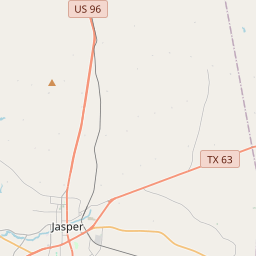Weeks Chapel Cemetery
Historical marker location:






This land was part of an 1838 grant to James Weeks (d.1863) in Jasper County, becoming part of Newton County in 1846. Weeks built a home about one-half mile south of this site, and married Catherine Hardy (b.1831) in 1847. They are presumed buried in the nearby Hardy Cemetery, about one-half mile east.
In 1887 Weeks' son James Robert (1850-1936) and his wife, Melvina Robinson (1840-1919) Weeks, granted one acre at this site to the Methodist Episcopal Church, South. A crude building was erected to serve as a church and school for area settlers.
When a native of the area, Jim Eudaley (1866-1893), was killed in a logging accident near Kirbyville (26 mi.S), J. R. Weeks, by then a Methodist minister, suggested a burial behind Weeks' Chapel. The cemetery subsequently served surrounding communities, including Brookeland (16 mi.NW), Farrsville (5 mi. SE), Harrisburg (2 mi. SW), and Weeks (2 mi. N), and now contains some 300 burials.
In 1904 a new church and school building was erected, and the congregation changed its denomination by organizing the Missionary Baptist Church. The school later consolidated with Farrsville, but the church and cemetery remain the focus of an annual homecoming.
Texas Sesquicentennial 1836-1986
As one of the most visible programs of the Texas Historical Commission (THC), historical markers commemorate diverse topics in Texas history, including: the history and architecture of houses, commercial and public buildings, religious congregations, and military sites; events that changed the course of local and state history; and individuals who have made lasting contributions to the state, community organizations, and businesses.
The Battle of San Jacinto fought on April 21, 1836, was the decisive battle of the Texas Revolution, and led to the capture of Santa Anna and the end of the conflict.
In 1836, Newton County was officially established and named after John Newton, a hero of the American Revolutionary War. The county's geographical location, with its fertile land and proximity to major waterways, attracted many settlers, particularly from Southern states. The region's economy was largely based on agriculture, with cotton and timber being major industries.
During the late 19th and early 20th centuries, the discovery of oil and gas brought prosperity to Newton County. The oil boom transformed the county, attracting numerous oil companies, creating jobs, and boosting the local economy. However, the boom eventually declined, leading to a shift back to agriculture and timber as the primary sources of income.
Throughout its history, Newton County has been shaped by both natural and man-made disasters. The county has been prone to hurricanes and floods, with devastating effects on the community. In recent years, efforts have been made to implement flood control measures and improve disaster preparedness.
Today, Newton County remains a rural area with a population that values its rich history and natural beauty. It continues to be a place of agriculture, timber, and outdoor recreation, attracting visitors with its scenic landscapes and wildlife. The county's history and resilience serve as a reminder of the challenges faced by its residents and the strength of the community.
Newton County Timeline
This timeline provides a glimpse into the major events and milestones that have shaped the history of Newton County, Texas.
- 1846 - Newton County is established by the Texas state legislature.
- 1870s - The county experiences growth due to the expansion of the lumber industry.
- 1904 - A devastating fire destroys a significant portion of the town of Newton.
- 1907 - Bon Wier is established as a sawmill town.
- 1930s - The Great Depression brings economic hardship to the county.
- 1940 - The Toledo Bend Reservoir is constructed, resulting in the flooding of parts of Newton County.
- 1960s - The construction of the Toledo Bend Dam leads to increased tourism and recreational activities in the county.
- 1990s - Newton County experiences population growth due to its proximity to the Toledo Bend Reservoir.
- 2005 - Hurricane Rita causes significant damage to the county.